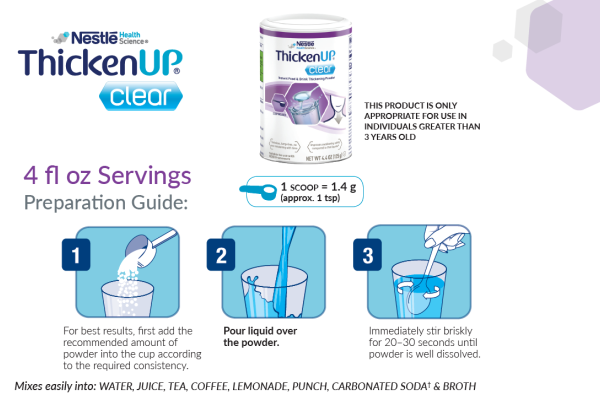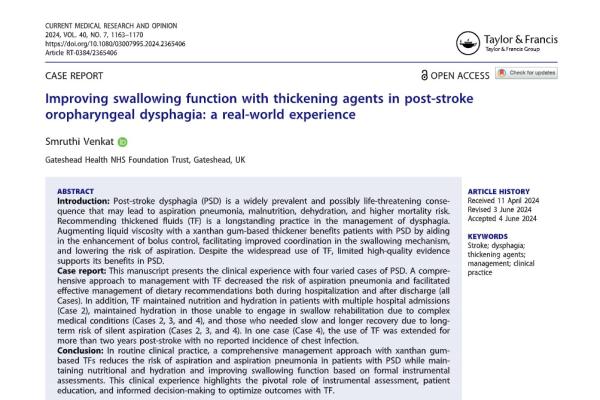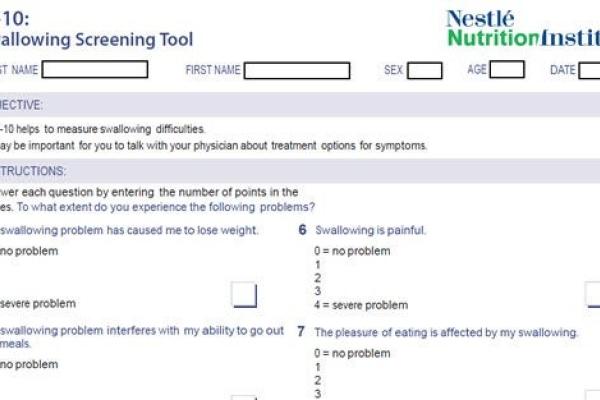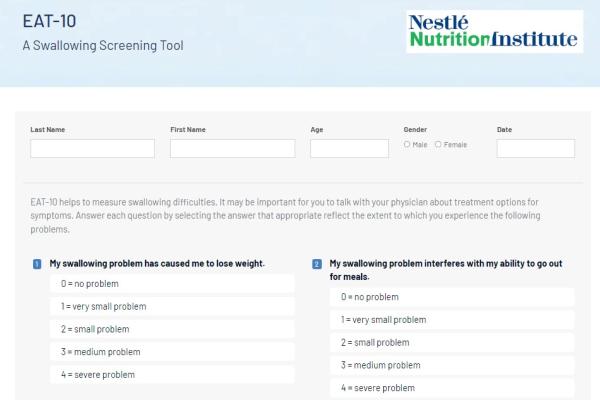Dysphagia
Dysphagia
Swallowing problems affect 1 in 25 adults annually in the US population1 and 1 in 6 American adults in the community setting.2 Many patients with dysphagia may suffer from malnutrition, highlighting the critical need for proper nutrition intervention to manage this condition.3
Nestlé Health Science offers nutritional solutions for people with dysphagia, including xanthan-based and starch-based thickening powders and oral nutrition supplements that can be thickened to achieve desired consistency to support optimal nutrition and hydration.
Dysphagia
Dysphagia
Swallowing problems affect 1 in 25 adults annually in the US population1 and 1 in 6 American adults in the community setting.2 Many patients with dysphagia may suffer from malnutrition, highlighting the critical need for proper nutrition intervention to manage this condition.3
Nestlé Health Science offers nutritional solutions for people with dysphagia, including xanthan-based and starch-based thickening powders and oral nutrition supplements that can be thickened to achieve desired consistency to support optimal nutrition and hydration.
Dysphagia
> Clinician Tools
1. Bhattacharyya N. The prevalence of dysphagia among adults in the United States. Otolaryngology Head and Neck Surgery. 2014;151(5):765-769.
2. Adkins C, Takakura W, Spiegel BMR, et al. Prevalence and characteristics of dysphagia based on a population-based survey. Clin Gastroenterol Hepatol. 2020;18(9):1970-1979.
3. Yarrow L and Mertz Garcia J. Malnutrition: Risks & concerns in dysphagia management. Dysphagia. 2010;19(4):115-120.







































